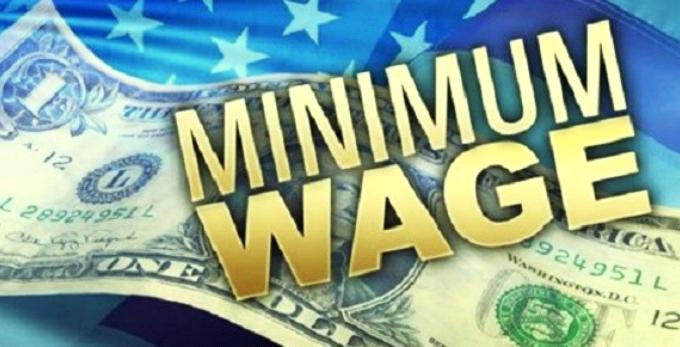The minimum wage has played a huge role in the American workforce for almost a century—but how did we get here? From Depression-era protections to today’s economic debates, understanding the history of the minimum wage sheds a lot of insight into today’s labor market. Knowing how the federal minimum wage evolved—and the specific context of states like New Jersey—offers a deeper understanding of today’s economic discussions and policy considerations. In this post, we’ll explore the complete history of minimum wage legislation, its economic impacts, key legal challenges, and when you might need an employment lawyer in NJ for wage-related issues.
Historical Trends and Legislative Changes in Federal Minimum Wage
The Fair Labor Standards Act of 1938
The federal minimum wage began in 1938 with the Fair Labor Standards Act (FLSA). Initially set at just $0.25 per hour, this (at the time) groundbreaking law meant to protect Great Depression workers from exploitation. Congress has adjusted the federal minimum wage 22 times since then, adjusting to shifts in political attitudes and economic needs.
Legislative Milestones
- 1950s-1960s: The minimum wage steadily rose, reaching $1.60 in 1968, marking its peak purchasing power. Amendments expanded coverage to include retail, service, and government workers, directly benefiting millions of American families.
- 1970s: Amendments in 1974 extended wage protections to public employees and domestic workers, increasing the minimum wage to $2.00, significantly reducing poverty rates.
- 1990s: After stagnating during the 1980s, the wage was incrementally raised, hitting $5.15 by 1997, a product of legislative actions taken to reduce economic disparities.
- 2007-2009: The Fair Minimum Wage Act of 2007 raised the wage incrementally to its current level of $7.25, unchanged since 2009.
The Economic Impact of Minimum Wage Changes
Balancing Wage Growth and Employment Concerns
The impacts of the minimum wage are a hot topic debated by economists. Early theories suggested wage hikes could negatively affect employment levels by increasing labor costs. For example, the Congressional Budget Office (CBO) projected potential job losses when analyzing a hypothetical federal minimum wage increase to $15 by 2025, estimating around 1.3 million fewer jobs.
However, most contemporary studies show minimal negative impacts, especially if the wage increases are moderate. Real-world case studies, like those comparing states with higher minimum wages like New Jersey to those adhering to the federal rate, often show little to no job losses.
Real-World Outcomes and Worker Benefits
Empirical research shows moderate wage increases improve economic outcomes for low-income workers, helping lift families out of poverty and reducing economic inequality. States with higher minimum wages tend to see less reliance on government assistance programs, which demonstrates increased financial stability among lower-income workers. This shows that thoughtful wage policy has tangible economic benefits.
Legal Challenges to Minimum Wage Laws
Constitutional Challenges and Landmark Decisions
Legal battles play a huge role in creating and sharpening minimum wage policies. The 1923 Supreme Court decision in Adkins v. Children’s Hospital initially rejected wage regulations as unconstitutional infringements on freedom of contract. However, a critical reversal occurred in 1937 with West Coast Hotel Co. v. Parrish, upholding Washington state’s minimum wage law and laying the groundwork for federal legislation.
Federal Authority Solidified
The 1941 United States v. Darby decision affirmed federal authority under the Commerce Clause, cementing the constitutional foundation for minimum wage standards. Subsequent landmark cases, like Garcia v. San Antonio MTA (1985), extended federal minimum wage protections to state and local government employees, providing wage standards the robust legal framework they have today.
Minimum wage laws’ legality remains firmly established, and disputes are mainly focused on compliance instead of constitutional challenges. If you’re facing a wage compliance issue, such as unpaid wages, misclassification, or overtime disputes, talk to an employment lawyer in NJ. They help you understand your rights and address any potential violations under state and federal wage laws.
New Jersey’s Progressive Approach to Minimum Wage
New Jersey provides a good example proactive minimum wage policymaking. As of 2024, the state minimum wage stands at $15.13 per hour—more than double the federal minimum wage of $7.25. The state implemented incremental increases starting in 2019, with future adjustments indexed to inflation to maintain workers’ purchasing power.
New Jersey’s strategic approach—addressing specific economic realities like the high cost of living—shows how local wage laws can enhance quality of life without harming employment levels.
Minimum Wage History FAQs
What is the federal minimum wage in 2025?
The current federal minimum wage is $7.25 per hour, established in 2009. It hasn’t increased since then, making it the longest period without an increase in U.S. history.
How does New Jersey’s minimum wage compare to the federal minimum wage?
New Jersey’s minimum wage is significantly higher than the federal rate. As of 2024, the New Jersey minimum wage is $15.13 per hour, with annual inflation adjustments ensuring ongoing increases.
Does raising the minimum wage cause job losses?
Economic research provides mixed results. Historically, substantial increases raised concerns about potential job losses. However, recent studies suggest that moderate increases typically have little to no negative impact on employment and can significantly improve worker earnings and reduce poverty.
Can states set their minimum wages higher than the federal rate?
Yes, states can set minimum wages above the federal rate. When state minimum wages exceed federal levels, employers must adhere to the higher state minimum wage. This way, states can handle their own specific economic conditions.
What major legal decisions have influenced minimum wage laws?
Major cases include West Coast Hotel v. Parrish (1937), which upheld minimum wage laws; United States v. Darby (1941), affirming federal authority; and Garcia v. San Antonio MTA (1985), extending protections to state and local government workers.
The Continuing Importance of Minimum Wage Legislation
The history of the minimum wage in the U.S. reflect the changing societal values about labor rights and economic fairness. Though the federal minimum wage hasn’t changed in a while, states like New Jersey are proactive with their legislative adjustments. These debates won’t stop anytime soon, so understanding the history, economic impacts, and knowing when to engage an employment lawyer in NJ will play a huge role in informed policy discussions and future legislative actions.
Resources:
https://www.dol.gov/agencies/whd/minimum-wage/history/chart
https://crsreports.congress.gov/product/pdf/R/R43792
https://www.history.com/news/minimum-wage-america-timeline
https://www.factcheck.org/2021/01/paul-distorts-cbos-estimate-on-impact-of-15-minimum-wage/
https://www.epi.org/blog/the-value-of-the-federal-minimum-wage-is-at-its-lowest-point-in-66-years
https://www.nj.gov/labor/lwdhome/press/2024/20241008_minwage.shtml
https://www.dol.gov/agencies/whd/minimum-wage/history
https://en.wikipedia.org/wiki/Minimum_wage_in_the_United_States




